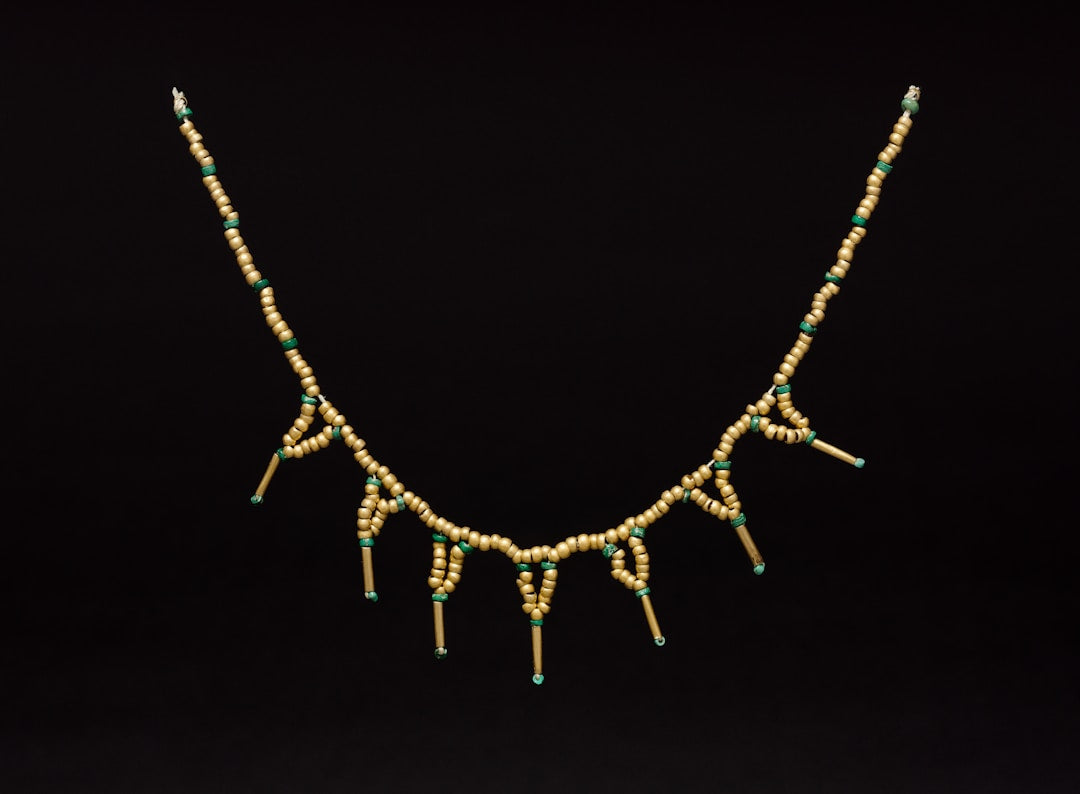Understanding the Contenders: Brass vs Bronze Jewelry
When exploring the world of men's accessories, metal choices abound. Beyond the traditional gold and silver, copper alloys like brass and bronze offer compelling alternatives, boasting unique aesthetics, durability, and character. But faced with the choice of **brass vs bronze jewelry**, understanding the key differences is crucial for making an informed decision that aligns with your style and lifestyle. Both metals share a copper base, yet their distinct compositions lead to significant variations in appearance, wear, and care requirements.
Choosing between brass and bronze isn't just about color; it's about embracing the specific properties each metal brings to a piece of jewelry. Whether you're drawn to the bright, golden sheen of brass or the warm, antique allure of bronze, this guide will delve into the nuances of **brass vs bronze jewelry** to help you select the perfect metal for your next ring, bracelet, or necklace.
What is Brass Jewelry? Composition and Characteristics
Brass is primarily an alloy of copper and zinc. The ratio of these two metals can vary significantly, directly impacting the brass's color, strength, and workability. Typically, the zinc content ranges from 10% to 40%. Higher zinc content generally results in a lighter, brighter yellow color and increased strength, while higher copper content leans towards reddish tones (sometimes called "red brass" or "nu-gold").
Visually, brass is celebrated for its warm, sunny, yellow hue that closely resembles gold, making it a popular and affordable alternative. Its excellent malleability allows artisans to craft intricate and detailed designs, which might be more challenging or costly with harder metals. Find out more about what brass is made of in our detailed breakdown.
Key Characteristics of Brass Jewelry:
- Color: Bright, lustrous yellow, often very similar to gold. Color can range from reddish-gold to pale yellow depending on the copper/zinc ratio.
- Malleability: Relatively soft and easy to shape, bend, and engrave, allowing for diverse design possibilities.
- Durability: Offers good durability and corrosion resistance, though it's generally softer than bronze. It stands up well to daily wear but can be susceptible to scratches.
- Tarnish: Brass is known to tarnish over time when exposed to air and moisture. This oxidation process creates a darker layer or patina, which can range from brown to black or even green. Regular polishing is often required to maintain its bright shine. Learn how to clean brass jewelry effectively.
- Affordability: Zinc is generally less expensive than tin (the primary alloying element in bronze), making brass jewelry a highly cost-effective option.
- Weight: Has a substantial, satisfying weight, though slightly less dense than bronze.
Brass lends itself well to a variety of men's jewelry styles, from sleek, modern pendants and men's brass rings to vintage-inspired cufflinks and tie bars. Its gold-like appearance provides a touch of luxury without the high price tag of precious metals.
What is Bronze Jewelry? Composition and Characteristics
Bronze is one of humanity's oldest alloys, famously lending its name to the Bronze Age. Traditionally, it's an alloy primarily composed of copper and tin (typically around 12-12.5% tin). However, modern bronzes can incorporate other elements like aluminum, manganese, nickel, phosphorus, or silicon to enhance specific properties like strength, castability, or corrosion resistance.
Bronze typically exhibits a warmer, deeper color than brass, usually appearing as a reddish-brown or golden-brown hue. It's renowned for developing a rich patina over time, often a greenish or deep brown layer, which is frequently considered a desirable characteristic, adding to its antique charm and rugged appeal. This natural aging process gives bronze jewelry a unique, evolving character.
Key Characteristics of Bronze Jewelry:
- Color: Warm, muted reddish-brown or golden-brown tones. Distinctly different from the bright yellow of brass.
- Hardness: Generally harder and more brittle than brass, making it more resistant to scratches and dents.
- Durability: Exceptionally durable and highly resistant to corrosion, including saltwater corrosion, which is why it's historically used in marine applications and sculptures.
- Patina: Develops a distinctive patina (often green or brown) due to oxidation. This patina can protect the underlying metal and is often aesthetically valued.
- Cost: Tin is generally more expensive than zinc, often making bronze jewelry slightly more costly than comparable brass pieces.
- Weight: Bronze is typically slightly denser and heavier than brass, contributing to a substantial feel.
Bronze's robustness and earthy tones make it an excellent choice for statement pieces in men's jewelry, such as bold rings, substantial cuffs, belt buckles, and pendants with a historical or mythological theme. Its inherent strength suits designs that require resilience.
Brass vs Bronze Jewelry: A Head-to-Head Comparison
Making the right choice in the **brass vs bronze jewelry** debate often comes down to comparing their key attributes directly:
Color and Appearance:
- Brass: Offers a bright, sunny, yellow-gold appearance. Ideal if you want a look closer to traditional gold. Its shine is brilliant when polished.
- Bronze: Presents a warmer, deeper, reddish-brown or golden-brown hue. Better suited for those seeking an antique, earthy, or more subdued look.
Durability and Strength:
- Brass: Good durability for everyday wear but is softer than bronze, making it slightly more prone to scratching and denting over time.
- Bronze: Generally harder and more resistant to wear and tear. Its superior strength makes it excellent for pieces expected to endure rougher handling. For sheer resilience in the **brass vs bronze jewelry** matchup, bronze often takes the lead.
Tarnish and Patina:
- Brass: Tarnishes relatively quickly, developing a darker layer that often requires regular cleaning to restore its original luster. The patina can sometimes be uneven. Does brass jewelry tarnish? Yes, and understanding why is key to its care.
- Bronze: Also oxidizes but develops a patina (often greenish or deep brown) that is frequently considered attractive and protective. Many wearers intentionally let the patina develop to achieve an aged look.
Cost:
- Brass: Typically the more budget-friendly option due to the lower cost of zinc compared to tin.
- Bronze: Usually slightly more expensive than brass, reflecting the higher cost of tin and sometimes more complex manufacturing processes due to its hardness.
Weight:
- Brass: Has a pleasing heft.
- Bronze: Generally slightly denser and heavier than brass, though the difference might be negligible in smaller jewelry pieces.
Allergies and Skin Reactions:
- Both brass and bronze are copper-based alloys. Individuals sensitive to copper might experience skin reactions.
- A common concern is the potential for the metal to leave a temporary green or black mark on the skin, especially in humid conditions or if the wearer sweats. This is a harmless reaction between the copper, acids in the skin, and oxygen. Find out more about why brass might turn skin green.
- Some alloys (particularly certain types of brass or bronze) may contain small amounts of nickel, a common allergen. If you have nickel sensitivity, inquire about the specific alloy composition before purchasing.
Which Should You Choose? Brass vs Bronze Jewelry for Men
The "better" metal in the **brass vs bronze jewelry** discussion ultimately depends on your personal priorities and style preferences:
-
Choose Brass if:
- You prefer a bright, shiny, gold-like appearance.
- You appreciate the potential for highly intricate designs due to its malleability.
- You are looking for a more affordable metal option.
- You don't mind performing regular cleaning and polishing to maintain its shine. Read about why polishing brass matters.
-
Choose Bronze if:
- You are drawn to warmer, deeper, reddish-brown tones and an antique or rugged aesthetic.
- You value maximum durability and scratch resistance for long-term wear.
- You appreciate the natural patina process and the unique character it adds over time.
- Your budget allows for a potentially slightly higher price point.
Consider the type of jewelry as well. A brass pendant might be perfect for its golden glow, while a heavy bronze ring could appeal for its substantial feel and aged look. There's no single right answer when comparing **brass vs bronze jewelry**; it's about matching the metal's characteristics to your individual taste.
Caring for Your Brass and Bronze Jewelry
Proper care will ensure your brass or bronze jewelry remains beautiful for years to come, whether you prefer a bright shine or a developed patina.
Brass Jewelry Care:
- Regular Polishing: To maintain its bright, gold-like shine, polish brass jewelry frequently with a soft polishing cloth specifically designed for brass or jewelry.
- Cleaning: For heavier tarnish, use a commercial brass cleaner or a gentle homemade solution (like lemon juice and baking soda paste, or mild soap and water). Always rinse thoroughly and dry completely afterwards. Learn about the importance of cleaning brass jewelry.
- Avoid Moisture: Remove brass jewelry before swimming, showering, or engaging in activities that cause heavy sweating, as moisture accelerates tarnishing.
- Storage: Store brass pieces in an airtight bag or jewelry box with an anti-tarnish strip to slow down oxidation.
Bronze Jewelry Care:
- Patina Preservation: If you value the natural patina, cleaning should be minimal. Gently wipe with a soft cloth or wash occasionally with mild soap and water, then dry thoroughly. Avoid abrasive cleaners or polishing cloths.
- Restoring Shine: If you prefer your bronze jewelry shiny, treat it similarly to brass. Use a bronze-specific cleaner or a gentle polishing cloth. Be aware that frequent polishing will prevent the characteristic patina from developing.
- Moisture Avoidance: Like brass, it's best to keep bronze jewelry dry. Remove it before exposure to water, chemicals, or excessive sweat.
- Storage: Store bronze jewelry separately to avoid scratches and in a dry place.
Conclusion: Embracing the Character of Copper Alloys
Both brass and bronze offer fantastic alternatives to traditional precious metals in men's jewelry. They provide distinct aesthetics – the bright gleam of brass versus the warm depth of bronze – along with durability and a sense of substance. The choice in the **brass vs bronze jewelry** debate hinges on personal preference regarding color, aging characteristics (tarnish vs. patina), maintenance commitment, and budget.
Whether you opt for the golden allure of brass or the rugged, historical charm of bronze, you're choosing a metal with character that can beautifully complement your personal style. By understanding their unique properties and care requirements, you can confidently select and enjoy your copper alloy jewelry for many years.

